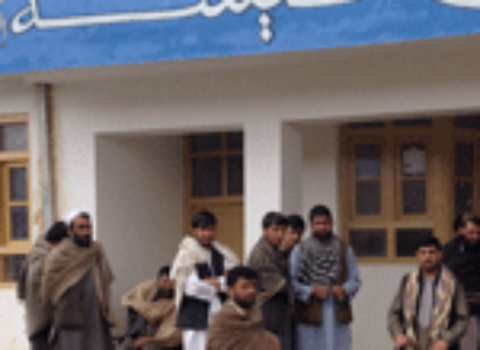Syria’s Summer of Stalemate
Looking back on Taftanaz and the slowly shifting course of Syria's revolution.
In the August issue of Harper’s Magazine, I detailed the travails of the rebel-held Syrian town of Taftanaz, which had suffered a two-day massacre at the hands of the Syrian army. Hundreds of homes were demolished and whole families slaughtered—yet somehow the revolutionary movement survived intact. In the months since my April visit, the story remains much the same: perseverance in the face of a bloody stalemate. Taftanaz lies only a mile or so from an important government airbase, which exposes the town to almost daily shelling. Indeed, in the early summer months, shells tore through civilian homes with brutal regularity, adding more destruction to an already devastated city. Then, in July, troops from the base stormed the town center, demolishing a mosque in the process. By August, the shelling and helicopter strafing runs had grown so intense that most of the townspeople fled, leaving behind only rebel fighters and some hardcore activists.
In this milieu, Islamist groups, entirely absent before, began to make an appearance. In late August, they ambushed the airbase, destroying as many as ten helicopters sitting on the tarmac, and last week they managed to shoot down a chopper as it flew over town. But the Islamists’ presence has sparked resentment from other rebel groups, who complain that they act unilaterally and without regard for the Syrian army’s retaliation. Perhaps partly because of this mutual mistrust, neither the Islamists nor the mainstream rebel groups have been able to capture the base. Still, the summer months saw their share of durable victories: rebel control now extends to almost all of the territory around Taftanaz, making the airbase nearly non-operational at times.
In many ways, Taftanaz’s evolution mirrors the overall course of the revolution this summer. Syrian forces are so overstretched that they simply cannot occupy the hundreds of small towns across the countryside, and so instead continue to resort to periodic raids and shelling. Islamist groups enjoy greater influence across the country, in large part because their organizational prowess far surpasses that of their secular counterparts. There are now at least a half-dozen such groups, which—while still a tiny minority—are exerting a greater role in the fighting. As in the environs of Taftanaz, the rebels have succeeded in extending their writ over larger parts of northern Syria. For instance, whereas I had to sneak into the country under a barbed-wire fence in the dead of night, today revolutionaries openly control the main northern border crossing with Turkey. But these developments are changes of degree, not kind—the stalemate I described in Taftanaz appears to be deepening elsewhere. Bashar al-Assad’s leadership circle remains largely intact, and his jets continue to pound cities like Aleppo. Yet every Friday, thousands in small towns across the country continue to stand together, carrying banners and chanting slogans, as determined and defiant as ever.




